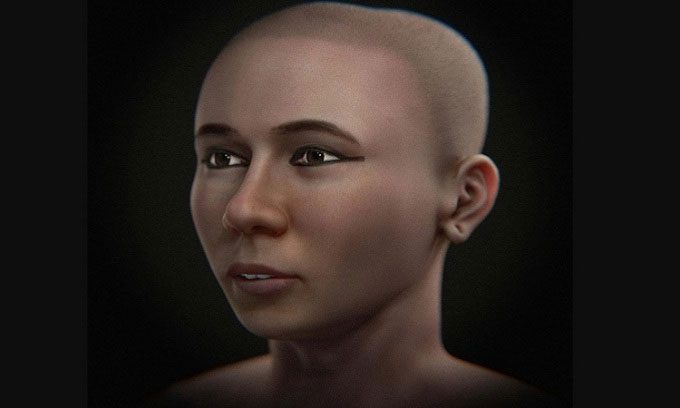Researchers Recreate the Face of Pharaoh Tutankhamun as a Young King of the 18th Dynasty, Ascending the Throne at Age 9 and Dying at Age 19.
A team of researchers from Australia, Italy, and Brazil has utilized modern technology to recreate the face of Pharaoh Tutankhamun, also known as King Tut, after 3,300 years. They are set to publish their findings in a new study featured in the Italian journal Anatomy and Embryology, as reported by Sun on May 31.

Reconstructed face of King Tut. (Photo: Cicero Moraes)
The researchers employed digital modeling and existing skull measurements from King Tut’s mummy to recreate his face. Brazilian graphic designer and co-author of the study, Cicero Moraes, described the resulting image as resembling a younger student rather than a responsible king. He shared that the modeling process was challenging, as the team could not directly access the skull of the late pharaoh.
“It was a process of investigation, where we linked each trace of information to create a 3D model of the skull. Using data on proportions and some important skull measurements, we could rely on the skull of a virtual donor to create the skull of Tutankhamun,” Moraes explained.
Next, the research team systematically determined the size of King Tut’s lips, the position of his eyeballs, the length of his ears, and more. All proportions were based on statistical studies conducted on CT scans of individuals with different ancestries.
Moraes believes that the reconstruction results are highly compatible with the actual face in terms of overall structure. According to Michael Habicht, an Egyptologist and archaeologist at Flinders University in Australia and co-author of the study, the reconstructed face closely resembles an image created by a group of French experts a few years ago and corresponds to ancient descriptions of Tutankhamun.
Tutankhamun was a pharaoh of Egypt during the 18th Dynasty, ruling from 1332 to 1323 BC. He was the son of Pharaoh Akhenaten and ascended the throne at the age of 9 or 10. He died at the age of 18, and the cause of his death remains unidentified.
In 1907, Lord Carnarvon George Herbert appointed British archaeologist and Egyptologist Howard Carter to oversee excavations in the Valley of the Kings. On November 4, 1922, Carter’s team discovered stairs leading to King Tut’s tomb. He opened the tomb and found the pharaoh’s sarcophagus in February 1923. Carter and his team took 10 years to collect the treasures within the tomb. For many, King Tut represents the glorious period of Egypt, as his tomb was filled with gold and silver treasures that showcase the opulence of the 18th Dynasty from 1569 to 1315 BC.


















































